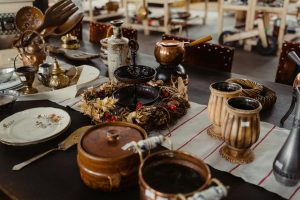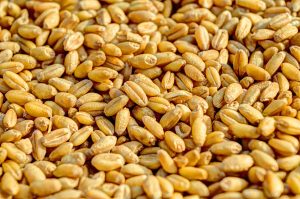The Art of Home Charcuterie
>
Welcome to the world of home charcuterie! If you’re a food lover or a fan of cured meats, chances are you’ve already heard of charcuterie. It’s a term that has been thrown around quite a lot in recent years, especially in upscale restaurants and dinner parties. But what exactly is charcuterie, and why is it such a popular trend? In this article, we’ll delve into the art of home charcuterie and explore why it’s more than just a fancy platter of meats and cheeses. So grab a glass of wine and get ready to learn all about the delicious world of charcuterie.
The Basics of Charcuterie
Charcuterie is the art of preparing and preserving meats through techniques such as curing, smoking, and fermenting. The word itself originates from the French word ‘charcutier’, which means “pork butcher”. However, charcuterie has expanded far beyond just pork and now includes a wide variety of meats such as lamb, beef, and even game meats.
The history of charcuterie dates back centuries and was originally developed as a way to preserve meat before the advent of refrigeration. In the past, charcuterie was mainly made by skilled butchers and chefs in order to use every part of the animal and prevent any wastage. Today, it has evolved into an art form and a popular culinary trend that can be enjoyed from the comfort of your own home.
The Charcuterie Board
While charcuterie can be enjoyed in different forms, the most common way to serve it is on a charcuterie board. This is a large wooden board or platter filled with an assortment of cured meats, cheeses, fruits, nuts, and condiments. It’s all about creating a beautiful and delicious spread that can be enjoyed as a snack or as a main course.
One of the great things about serving charcuterie on a board is that it’s completely customizable. You can choose your favorite meats, cheeses, and accompaniments to create a unique and personalized experience. It’s also a great option for parties and gatherings as it allows people to sample a variety of different flavors and textures.
Selecting Your Meats
When it comes to choosing your meats for a charcuterie board, there are a few key things to keep in mind. First, be sure to select a mix of cured and cooked meats, such as salami, prosciutto, and ham. This will provide a variety of flavors and textures to the board. You also want to make sure you have a balance of lean and fatty meats.
Secondly, consider the origin and quality of the meats. Look for locally sourced and ethically raised options for the best flavor and freshness. You can also experiment with different types of meats such as venison, duck, or even bison for a unique twist on traditional charcuterie.
Pairing with Cheeses and Accompaniments
In addition to the meats, a good charcuterie board always includes a selection of cheeses and accompaniments. A general rule of thumb is to have at least three different types of cheese, including a mix of soft and hard cheeses. Popular choices include brie, gouda, and blue cheese.
As for accompaniments, the options are endless. Some classic choices include olives, crackers, and dried fruits, but don’t be afraid to get creative! You can add items like honey, fig jam, or even pickled vegetables for a unique and flavorful addition to your board. Just be sure to balance out the flavors and textures for a well-rounded and enjoyable experience.
The Art of Pairing and Presentation
The key to a successful charcuterie board is not just in the selection but also in the pairing and presentation. When it comes to pairing, a general rule is to match the intensity of the flavors. This means pairing strong tasting meats with equally strong tasting cheeses and accompaniments.
As for presentation, the key is to create a visually appealing spread. This includes arranging the meats and cheeses in a visually pleasing way, using different heights and textures. You can also add visual interest by incorporating pops of color with fruits and vegetables, as well as adding fresh herbs for added flavor and aroma.
Conclusion
The art of home charcuterie is more than just putting together a platter of meats and cheeses. It’s about exploring different flavors, experimenting with pairings, and creating an experience for both the taste buds and the eyes. So why not grab a board and start creating your own charcuterie masterpiece at home? With the right ingredients and a little bit of creativity, you can elevate your snacking game and impress your friends and family with your own personalized charcuterie board.










